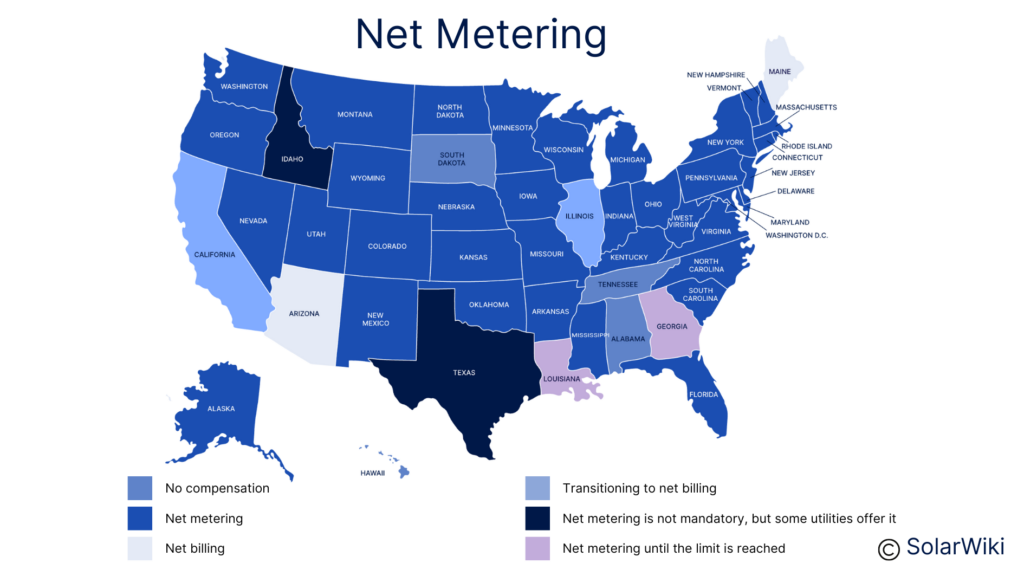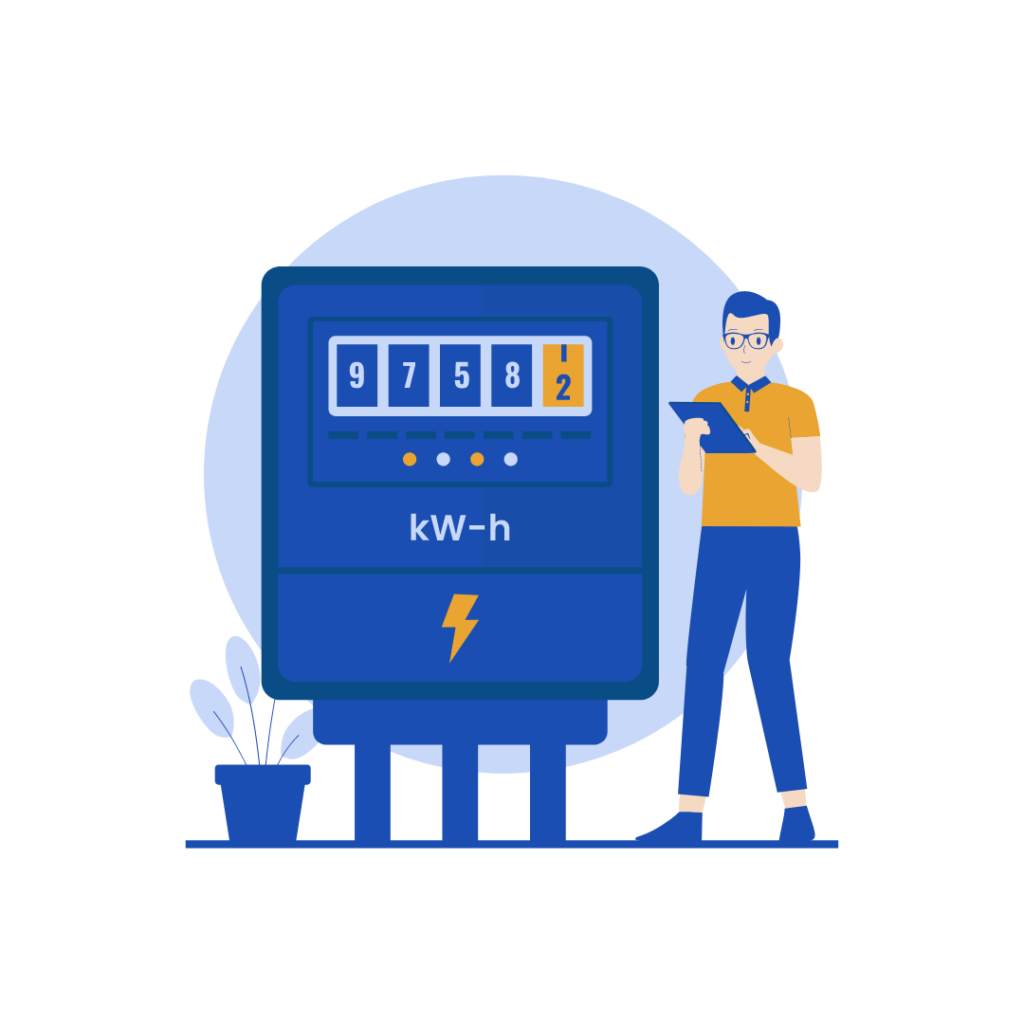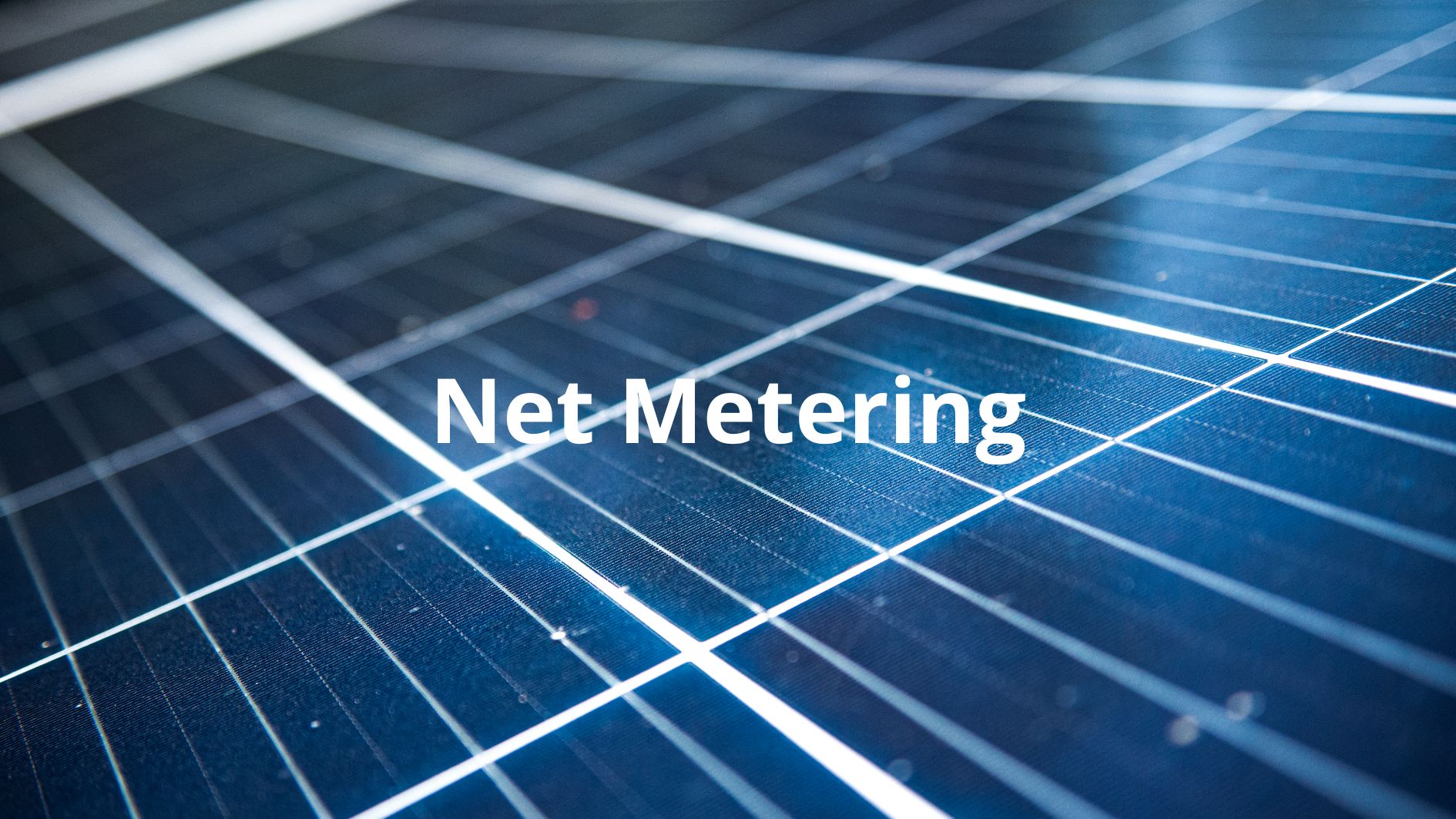Image source: Canva.com
As solar energy continues to gain traction as a viable and sustainable energy source, net metering has emerged as a key policy supporting its adoption. Net metering, also known as net energy metering (NEM), is a billing mechanism that allows solar energy system owners to receive credits for the electricity they add to the grid. This article delves into the intricacies of net metering, its benefits, and how it works to incentivize solar energy usage.
What is Net Metering?
Net metering is a system that enables residential and commercial solar panel owners to feed excess electricity generated by their solar systems back into the grid. When a solar energy system produces more electricity than the home or business consumes, the surplus is sent to the utility grid. In return, the utility company provides credits to the customer for this excess electricity.
These credits can be used to offset the electricity consumed from the grid during times when the solar panels are not producing enough energy, such as at night or on cloudy days. Essentially, net metering allows solar panel owners to “store” their excess energy production in the form of utility credits.
How Does Net Metering Work?
The operation of net metering is straightforward and involves a bidirectional meter. Here’s a step-by-step explanation of how it functions

Energy Production
Solar panels generate electricity when the sun is shining. The energy produced first powers the home or business, reducing the amount of electricity needed from the grid.

Excess Energy
If the solar panels generate more electricity than is being consumed, the excess energy is sent to the grid. The bidirectional meter records this outflow of energy.

Energy Credits
The utility company credits the solar panel owner for the excess electricity fed into the grid. These credits appear on the monthly utility bill and can be used to offset future electricity consumption.

Energy Consumption
During periods when the solar system is not generating enough electricity (e.g., at night or during cloudy weather), the home or business draws power from the grid. The bidirectional meter tracks this inflow of energy.

Net Usage
At the end of the billing cycle, the utility company calculates the net energy usage by subtracting the amount of electricity exported to the grid from the amount imported. Customers are billed for their net energy consumption, which is the difference between the electricity consumed and the electricity generated.

During the day, your photovoltaic system might produce more electricity than you’re using. This surplus electricity is sent back to the grid, effectively running your electric meter in reverse. At night or on cloudy days, when your energy consumption exceeds what your solar panels produce, you pull electricity from the grid, running your meter forward. At the end of the billing cycle, you’re charged only for your “net” energy usage – the difference between the electricity you sent to the grid and what you consumed.
Benefits of Net Metering
Net metering offers several advantages for both solar panel owners and the broader community
Cost Savings
Solar panel owners can significantly reduce their electricity bills by earning credits for excess energy production. In many cases, these savings can help offset the initial cost of installing a solar energy system.
Encouraging Renewable Energy
Net metering incentivizes the adoption of solar energy by making it more economically attractive. This helps to reduce dependence on fossil fuels and promotes the use of renewable energy sources.
Grid Support
Distributed solar energy systems, like those used in net metering, can alleviate the load on the grid during peak demand times. This can enhance grid stability and reduce the need for costly infrastructure upgrades.
Environmental Benefits
By promoting solar energy, net metering contributes to the reduction of greenhouse gas emissions and other pollutants associated with traditional electricity generation methods.
Challenges and Considerations
While net metering has numerous benefits, it also presents some challenges and considerations:
Rate Design
The design of net metering rates can significantly impact the financial benefits for solar panel owners. Policies and compensation rates vary widely by state and utility, affecting the overall attractiveness of net metering.
Grid Impact
As the number of solar installations increases, managing the inflow and outflow of energy to the grid becomes more complex. Utilities must ensure that the grid can handle the variable energy supply without compromising reliability.
Policy Changes
Net metering policies are always subject to change, which can create uncertainty for potential solar adopters. Changes in compensation rates or eligibility criteria can significantly affect the financial viability of solar investments.
Net Metering Across the United States

Net metering policies and regulations vary significantly across the United States. Some states offer robust net metering programs with favorable compensation rates, while others have more restrictive policies. Potential solar energy system owners need to understand the specific net metering rules and incentives available in their state.
For instance, in California, the Net Energy Metering 2.0 (NEM 2.0) program continues to provide substantial incentives for solar adopters, though it includes non-bypassable charges and time-of-use rates to better align with grid needs. Meanwhile, states like New York have transitioned to the Value of Distributed Energy Resources (VDER) tariff, which aims to more accurately reflect the value of solar energy to the grid.
Net metering plays a crucial role in promoting the adoption of solar energy by providing a financial mechanism that makes solar investments more attractive. By allowing solar panel owners to earn credits for excess energy production, net metering helps reduce electricity bills, support grid stability, and contribute to environmental sustainability. As policies continue to evolve, it remains essential for stakeholders to stay informed about the latest developments in net metering to maximize its benefits.
To see how much you can save with solar, check out our Solar Calculator or register for a free account on SolarWiki to get custom solar quotes from local installers.
Discover the Ideal Solar System for Your Home in Just a Few Clicks!
Alternative Net Metering Models
Various alternatives to traditional net metering exist across the United States, including net billing, feed-in tariffs, and buy-all, sell-all programs. These alternatives have been implemented in states that previously had net metering but transitioned to different models, as well as in states that never adopted robust net metering policies. For example, Arizona, Michigan, and California have replaced traditional net metering with “successor” programs.
Here’s an overview of some net metering alternatives:
Net Billing
In this model, the excess electricity generated by a solar system is credited at a rate different from the retail rate, often closer to the wholesale rate. Customers are billed for their total consumption at the retail rate but receive credits for their surplus generation at the lower net billing rate.
Feed-In Tariffs (FIT)
This approach pays solar energy producers a fixed rate for all the electricity they generate, regardless of their own consumption. The rate is typically set by the government or utility and is designed to incentivize renewable energy production by providing a predictable revenue stream for solar energy system owners.
Buy-All, Sell-All
Under this system, solar energy producers must sell all the electricity they generate to the utility at a predetermined rate and then buy back the electricity they need at the retail rate. This model separates the generation and consumption transactions, making it distinct from net metering where the two are interconnected.
These alternatives reflect the diversity of approaches states are taking to integrate distributed solar energy into the grid, balancing the interests of solar energy producers, utilities, and the overall grid infrastructure.
How Electricity Bills Work with Net Metering

Typically, homes produce excess electricity in summer and use more from the grid in winter. Instead of receiving monthly checks for surplus production, you build up credits in high-production months to use during low-production periods. With a properly designed system, your annual production can match your total electricity consumption, even if monthly outputs vary.
When your system generates more electricity than you use in a month, you receive a credit based on the net kilowatt-hours returned to the grid. If you consume more than you generate, you pay for the net electricity used, minus any credits from excess generation.

Discover your solar savings potential in just a few clicks!
Disclaimer: The information presented here is intended to provide a general overview of net metering policies and their potential benefits for homeowners with solar installations. However, this information should not be considered as official financial, legal, or technical advice. Net metering policies, utility rates, and incentive programs can vary significantly by location and are subject to change over time.





